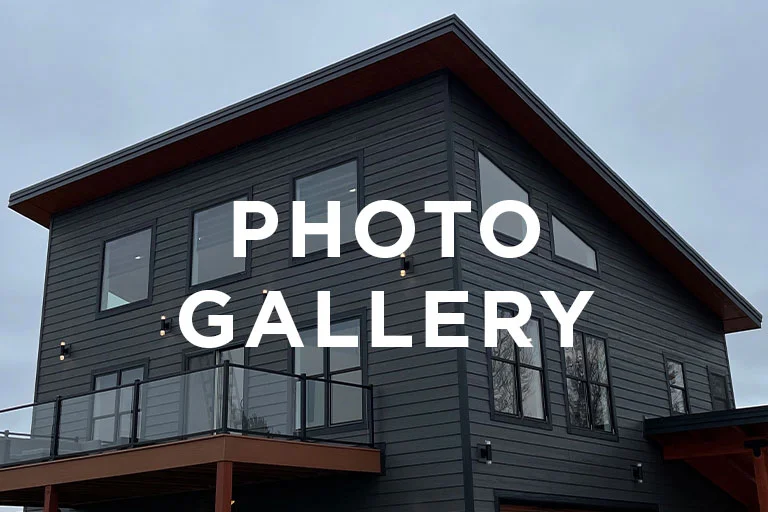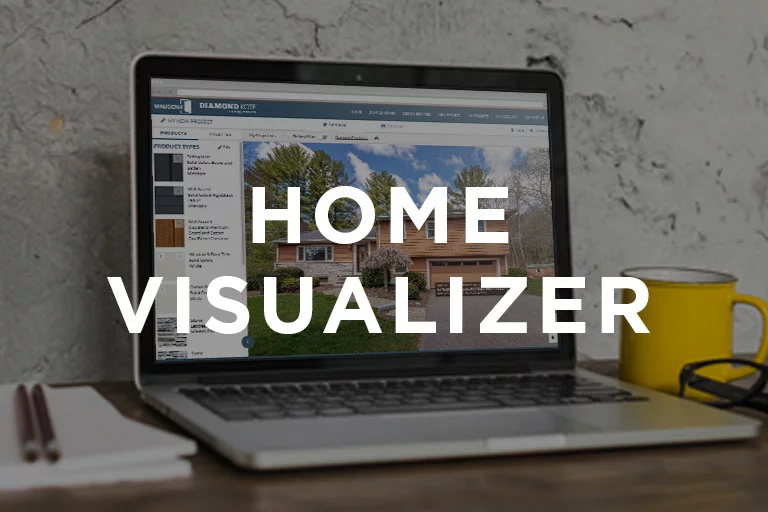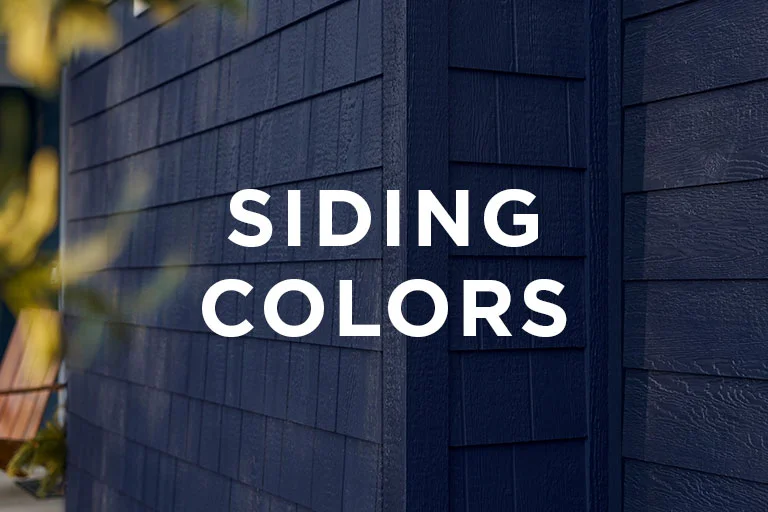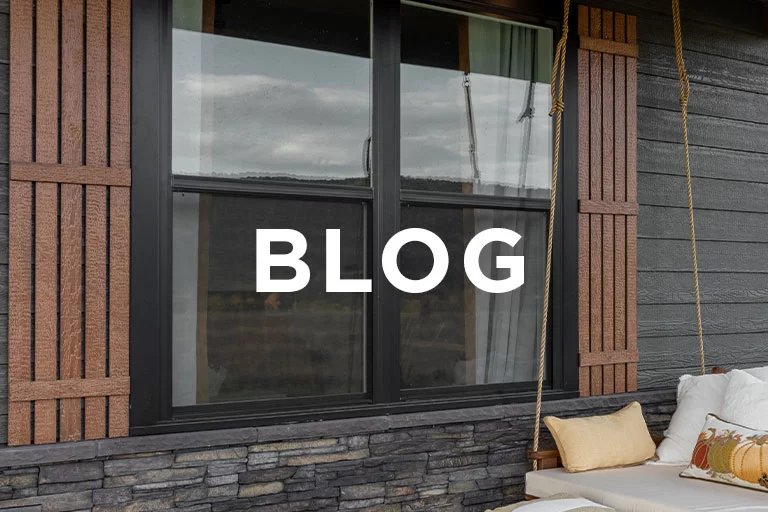Whether you’re browsing Zillow looking at your dream house for fun, remodeling your current home’s exterior, or building a new house, you’ve probably heard home style buzzwords thrown around a few times, like Modern Farmhouse, Craftsman, and Mid-Century Modern. These buzzwords describe the home's architectural style, and understanding what elements go into a specific style’s design can help you choose exterior décor and guide you in styling your interior


The classic farmhouse has been revamped to make it more modern, clean and give it an overall updated look. Instead of farmhouses being found on country homesteads, the modern farmhouse can be in suburban areas to bring that country look and feel to the big city.
the basics
Exterior Colors: Many modern farmhouses feature a white exterior; however, we have seen light gray and black! Traditional farmhouses use lap siding, but as the modern farmhouse trend has evolved, board and batten has become a popular choice - all board and batten or an accent on the porch.
Black and white trim are equally popular. While white keeps the sleek look, black adds dimension and ties in the dark roofing.
Roofing: Dark gray or black shingles are standard to create high contrast. You will often see metal roofing used, adding an industrial aspect to the exterior.
Exterior Lighting: Standard farmhouse lighting uses brass barn lighting, and while we still see brass and bronze colors used for the modern version, black is definitely at the top.
Doors: We're sure you've guessed it by now, but a black front door has become a modern farmhouse staple. The dark color draws your eyes to the entryway, creating an inviting atmosphere. Simulated Divided Lites (SDL) from Waudena® are rising in popularity and create texture and dimension on the door.



Popular in the Midwest and Pacific Northwest, Craftsman homes embody natural materials, handicrafts, and original designs. These homes have origins dating back to the late 1800s and traditionally used locally sourced raw materials. Craftsman homes are full of character and individuality to match their homeowners.
THE BASICS
Exterior Colors: Like the first Craftsman homes, modern versions stick to a natural color palette featuring browns, grays, and tans. Occasionally homeowners will opt for brighter colors, like green or blue, to brighten up the exterior. On top of the siding colors, these homes feature exposed wood to bring in additional natural elements, often found on porch beams or braces.
Roofing: Builders learned to maximize their materials which resulted in homes having multiple integrated roof forms to add visual interest without adding additional space. The rooflines are low-pitched, adding further drama to the overall look.
Porch: A covered front porch with large, tapered columns is a stand-out element of a craftsman exterior, creating a grand entrance. These columns are either solid or contain carved details. The bottom of the columns traditionally feature stone accents used on the rest of the exterior. The porch is also constructed from multiple roof forms and is highlighted with its own gable.
Doors: Shaker style doors are at the forefront, and like the modern farmhouse, Simulated Divided Lites are seen on almost every craftsman's door. Natural wood tones are at the top for colors used, but as the Craftsman style gains further popularity, colored doors are making their way into entrances.

Created in the mid 20th century, Mid-Century Modern homes are truly works of art. They incorporate various geometric shapes, bold pops of color, and large, angular windows to create an easily recognizable exterior. And, this home style was the first to begin using the now-popular bi-level home design.
THE BASICS
Exterior Colors: Original mid-century modern homes used various colors ranging from soft pastels to earthy greens to cool-toned blues or even dark grays and black. The quirky appeal of Mid-Century Modern allows for virtually any color palette to be used, as long as they complement each other to create a cohesive exterior.
Roofing: When you drive by a mid-century modern house, it's hard not to be amazed at the roof lines. Some are almost entirely flat, some have one central peak with symmetrical pitches, and some even feature intriguing multi-leveled asymmetrical rooflines.
Windows: The expansive windows add more architectural appeal with the mesmerizing rooflines. These windows feature one large, single-paned window or a series of tall windows side-by-side. You will often see the top of the window align with the angle of the roofline to create symmetry.
Doors: Mid-century modern front doors are iconic; they feature geometric-shaped windows, staggered glass, and bright colors. These doors are often paired with sidelites to give the entryway additional natural light and add further visual interest to the overall exterior.


Exterior Colors: Homeowners use natural wood siding or siding that looks like real wood, paying homage to traditional log cabins. This siding is finished or stained to give the natural wood look without actual logs. Our DuoBlend Premium paints are the perfect solution for cabins, giving the two-toned look of stained wood with the benefits of composite siding.
Roofing: A cabin style home features various rooflines, often with one prominent peak that creates a tall ceiling in a large open area inside the house, like a living room. If the home has a second story, dormers are commonly added to create additional gables for visual interest.
Windows: Since cabins were traditionally built in forests and around lakes, large windows are a predominant feature on the back of the house. These windows are side by side, top to bottom, and fill up the house’s largest side, giving you the best view possible.
Porch and Decks: Because cabins are meant to be a relaxation oasis, large porches and decks are extremely common. These outdoor spaces are ideal for entertaining guests, watching the sunset, or taking a mid-day break. Because these homes were built for all-weather, the front door will often have a storm door covering the main front door for extra protection.


Exterior Colors: Due to the limited color pigments available in the early New England era, Cape Cod homes were traditionally earth tones, like red, brown, white, and green. As home trends evolved, the architecture stayed the same, but the exterior colors followed the trends making Cape Cod a versatile home for every region. Shake siding is common as traditional Cape Cod homes use cedar shakes to brave the seaside weather.
Roofing: Since these homes were built to withstand brutal winters, the roof pitch is often very steep to allow snow to easily fall and create low ceilinged rooms to keep in the heat. The steep slopes give the perfect opportunity to add dormers to the second-level rooms with natural lighting and break up the monotonous shingles. You'll often see a fireplace sticking out the top, directly in the middle of the home.
Entryway: Simple and welcoming, the Cape Cod entryway features a singular front door surrounded by windows; these can be on each side or focused on one side. These entryways are usually situated without a porch but have a few steps leading up the door.
Ready to find siding to fit your favorite home style? Diamond Kote®'s 30-Year No Fade Finish gives you the peace of mind that the colors you choose will provide you with curb appeal that lasts generations. And with our lap siding with RigidStack™, you'll have siding that is more durable against high winds, protecting your home from Mother Nature.
Order your FREE Diamond Kote® samples to start planning your exterior color palette.
Check out our other blogs:
Siding Styles to Bring Your Exterior Dreams to Life
Top Siding Colors for 2021











